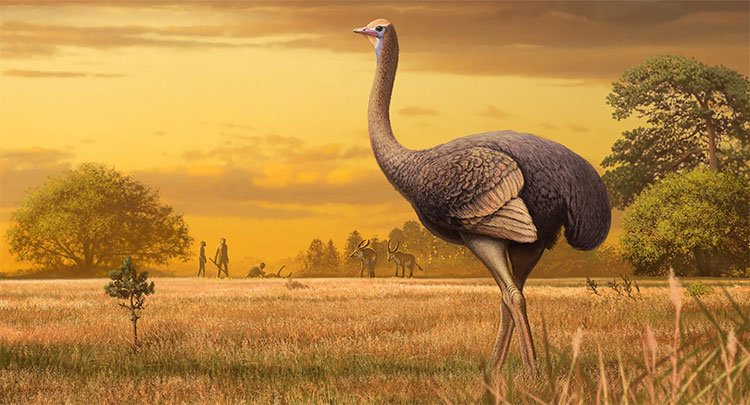Prehistoric birds weigh half a ton and 3.5 meters high
Experts found the giant bird running very fast, living 1.5-2 million years ago, may have been the target of prehistoric hunters.
Fossils of a heavy bird equivalent to polar bears discovered in the cave of Taurida, Crimea peninsula, near the Black Sea, Independent today reported. The animal does not fly, is 3.5m high, weighs 450kg and lives 1.5-2 million years ago. It could be a source of meat, bones, feathers and eggs for prehistoric hunters.
The Pachystruthio dmanisensis bird, which is about three times heavier than today's ostrich and runs very fast. Speed is probably an important factor in helping them survive when they live with the large predators of the Ice Age like giant hyenas, giant hunting leopards or sword tigers.
Scientists knew this bird before but did not think their size was so large. They once thought that such large birds were found only in Madagascar, New Zealand and Australia.

Pachystruthio dmanisensis bird with a height of 3.5 m and strong legs.(Photo: Andrey Atuchin).
"When holding the femur in my hand and first feeling its weight, I think this must be the fossil of Madagascar's elephant bird because there are no such large sized birds found in Europe. However, The bone structure shows something completely different, " said Dr. Nikita Zelenkov at the Russian Academy of Sciences, the lead author of the study.
"We do not have enough data to determine if it has the closest family to ostrich or other creature. Its weight is almost double that of the largest moa, three times the largest bird alive, an ostrich. and close to the mature polar bear, " Zelenkov added. The massive body causes the elephant bird to be limited in speed, but Pachystruthio dmanisensis's femur is long and thin, indicating that it runs very fast.
The oldest place to discover traces of the Hominin outside Africa is the town of Dmanisi, Georgia, near Taurida cave. Scientists believe that Pachystruthio dmanisensis may be one of the typical animals of the same time as the first Hominin to Europe. This bird may have come near the Black Sea by passing through the South Caucasus and Turkey.
"The new Taurida cave system was discovered last summer, during the construction of a new road. Last year, mammoth fossils were also excavated. There may be many other fossils here to help us understand. more about prehistoric Europe , " said Dr. Zelenkov.
Most likely, this bird grows so big because the environment is gradually becoming drought, the Earth is about to enter the Renewal. Animals with massive bodies have lower metabolic demands, meaning they will take advantage of less nutritious foods on large prairies.
- Extinct dinosaurs make ostriches stop flying
- Fossil egg shells of ostriches confirm the theory of continental drift
- One of the most feared prehistoric beasts was extinct because of eating vegetables
- Prehistoric birds sacrifice their tails to evolve
- Close up of fossils of crocodiles, elephants, giant prehistoric birds
- The intact fossil after 120 million years reveals a mysterious loss of prehistoric animals
- Huge strange bird nest in people's houses
- Detect bird's bones in dinosaur belly
- Detected 3,300 years claws of the wingless prehistoric bird
- Half a century, North America alone lost 3 billion birds
- What color does prehistoric birds have?
- First evidence of dinosaurs 'flying' to eat birds
- Birds never ... fly
- Giant bird eating grass
 Discovered an ancient centipede fossil 99 million years old
Discovered an ancient centipede fossil 99 million years old Discovered bat-like dinosaurs in China
Discovered bat-like dinosaurs in China Discovered a 200-year-old bronze cannon of the coast
Discovered a 200-year-old bronze cannon of the coast Discover 305 million-year-old spider fossils
Discover 305 million-year-old spider fossils